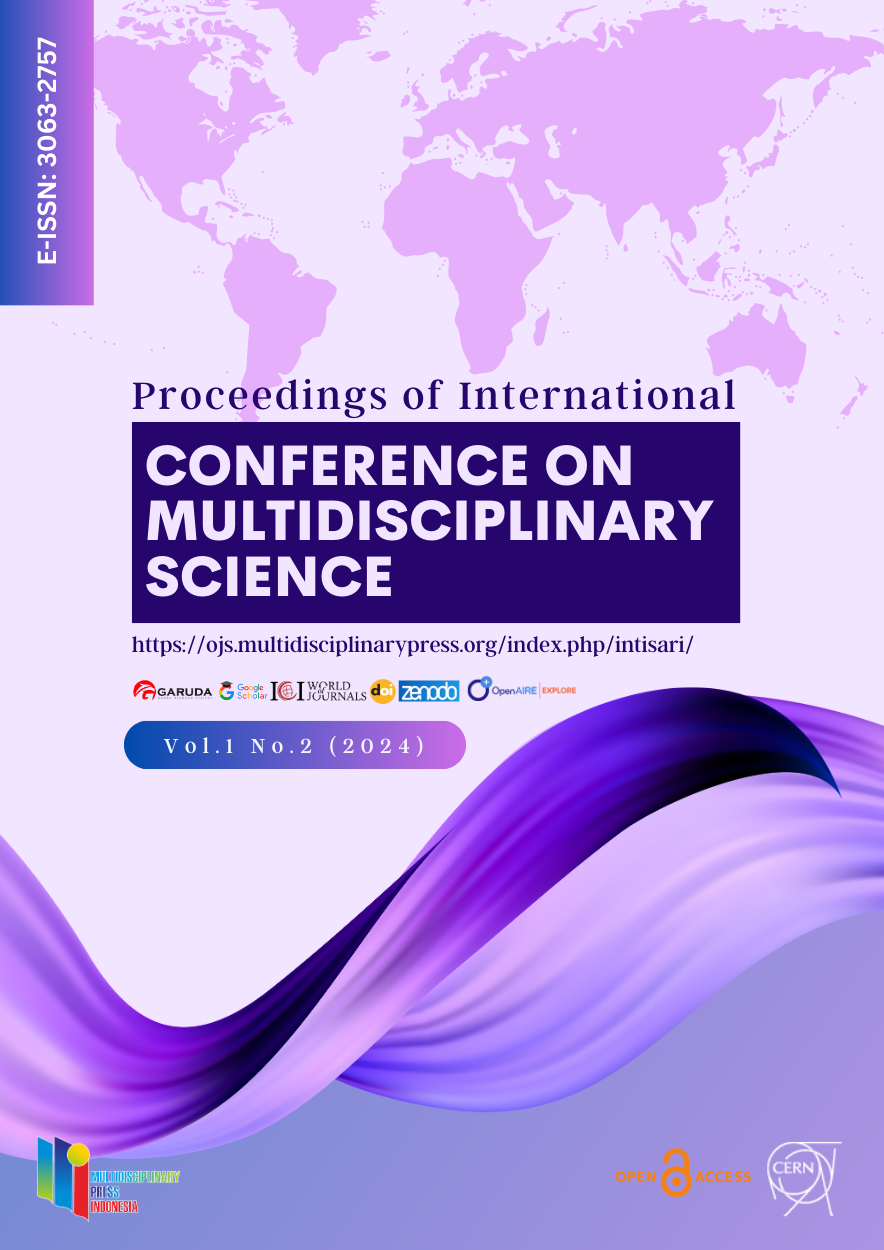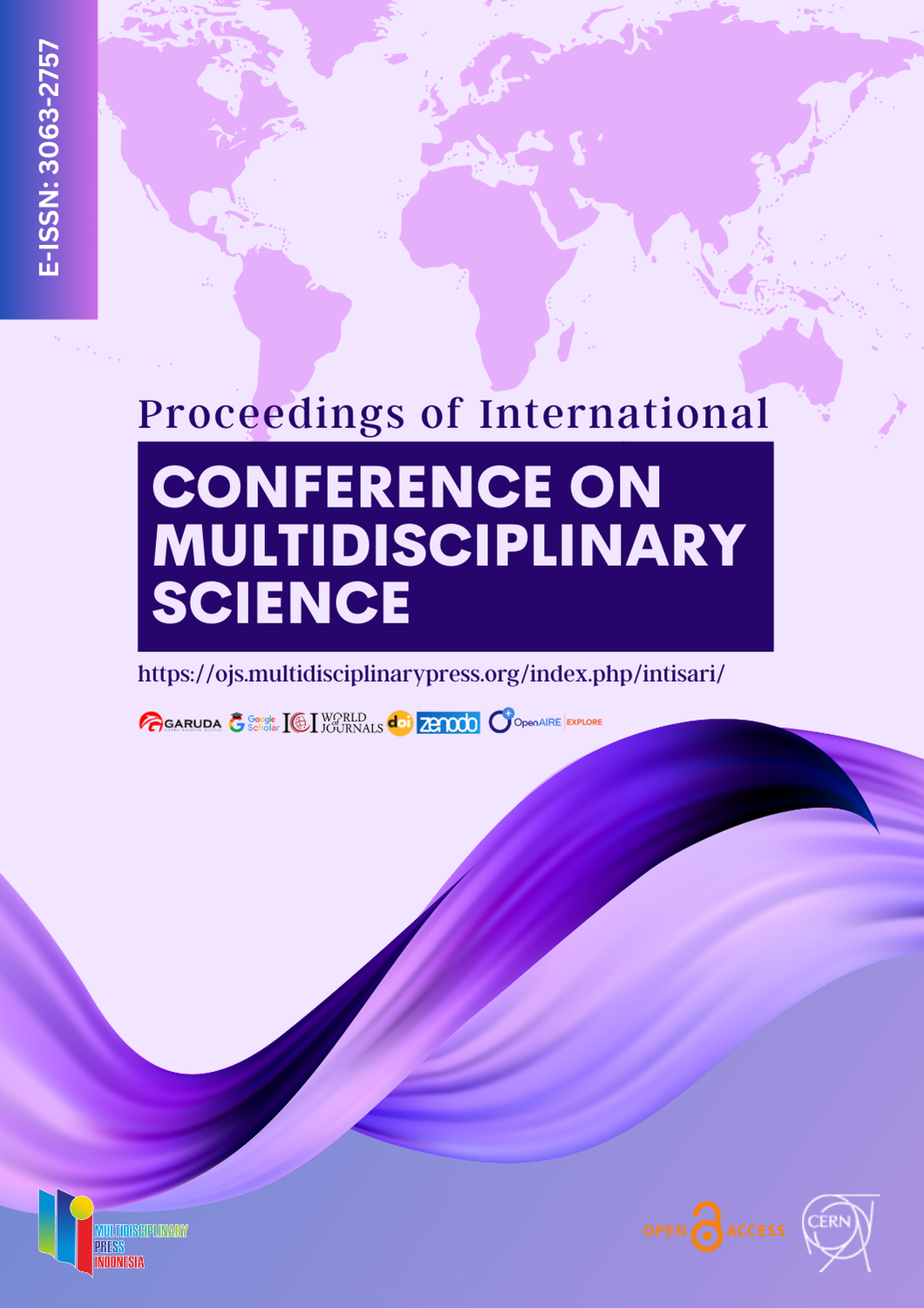Maximizing the Work Environment
Keywords:
Leadership Style, Role Conflict, Communication, Work EnvironmentAbstract
Human (HR) is a part of organizational management that focuses on the human resource element. The task of human resource management is to manage the human element well in order to obtain a workforce that is satisfied with their work. In organizations, humans are one of the most important elements in an organization. This research aims to examine the influence of leadership style and role conflict on the work environment with communication as an intervening variable at the Bank Indonesia Representative Office, North Sumatra Province. The results of this research are as follows: Leadership style has a positive and significant effect on communication with an original sample value of 0.219 and an ap value of 0.017. Leadership Style has a positive and significant effect on the Work Environment with an original sample value of 0.362 and ap value of 0.008. Communication has a positive and insignificant effect on the work environment with an original sample value of 0.224 and ap value of 0.065. Role Conflict has a positive and significant effect on the Work Environment with an original sample value of 0.680 and ap value of 0.000. Role Conflict has a positive and insignificant effect on the Work Environment with an original sample value of 0.273 and ap value of 0.053. Leadership Style has a positive and insignificant effect on the Work Environment through Communication with an original sample value of 0.049 and ap value of 0.124. Leadership Role Conflict has a positive and insignificant effect on the Work Environment through Communication with an original sample value of 0.049 and ap value of 0.124.
Downloads
References
Abdillah, Willy dan Jogiyanto Hartono. (2016). Partial Least Square (PLS): Alternatif Structural Equation Modeling (SEM) dalam Penelitian Bisnis. Yogyakarta: Andi.
Afandi, Pandi. (2016). Concept & Indicator Human Resources Management for Management Research. Yogyakarta: Cv Budi Utama..
Edison, Emron., dkk. (2016) Manajemen Sumber Daya Manusia. Alfabeta. Bandung
Fitriani, Tri. "Pengaruh Gaya Kepemimpinan Terhadap Motivasi Kerja (Study Kasus Badan Pemberdayaan Masyarakat Kab. Kepulauan Selayar)." Economics Bosowa 2.3 (2017): 61-72.
Firnanti, Hanna, (2015). Faktor-Faktor Yang Mempengaruhi Kinerja Auditor. Jurnal Bisnis dan Akuntansi. Vol.15.No.1.
Ghozali, Imam, Hengky Latan. (2015). Konsep, Teknik, Aplikasi Menggunakan Smart PLS 3.0 Untuk Penelitian Empiris. BP Undip. SemarangHarnanto.
Hasibuan, Malayu S.P. (2016). Manajemen Sumber Daya Manusia. Edisi Revisi. Jakarta: Penerbit PT Bumi Aksara.
Haryono, S. (2017). Metode SEM Untuk Penelitian Manajemen AMOS LISREL PLS. PT. Luxima Metro Media.
Jogiyanto. (2016). Metodologi Penelitian Bisnis: Salah Kaprah dan Pengalaman-pengalaman. BPFE. Yogyakarta.
Robbins, S.P dan Judge T.A. (2015). Perilaku Organisasi. Jakarta: Salemba Empat
Sedarmayanti. (2017). Perencanaan dan Pengembangan SDM untuk Meningkatkan Kompetensi, Kinerja dan Produktivitas Kerja. PT Refika Aditama. Bandung.
Sutardji.(2016) Perencanaan Dan Pengembangan Sumber Daya Manusia. Edisi Pertama. Yogyakarta; Dee Publish.
Sutrisno. (2017). Manajemen Sumber Daya Manusia, Edisi Ke-9, Kencana, Jakarta.
Sugiyono. (2018). Metode Penelitian Kuantitatif. Bandung: Alfabeta.
Downloads
Published
How to Cite
Issue
Section
Categories
License
Copyright (c) 2024 Andy Saddam Ikhsan, Mesra B

This work is licensed under a Creative Commons Attribution 4.0 International License.





